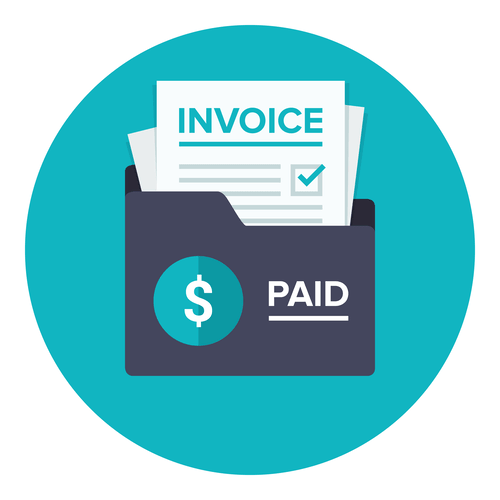
As she continues her journey with us, we’re eager to see her explore even greater heights in her career. Marianne embodies the spirit of leadership, determination, and expertise in the world of accounting. With her foundation firmly set with eight pivotal years at a significant local CPA firm, Marianne took the bold step in 1990 to co-found her very own enterprise, Vocker Kristofferson and Co. For three decades, she steered this venture to impressive heights, culminating in its acquisition by SD Mayer in 2022.
Breaking Down The Winery Chart of Accounts (And Free Template)
Katie’s journey in the world of accounting is an inspiring tale of adaptability and passion. Jaime’s blend of technical skills, academic background, and personal interests make him a well-rounded individual and a valuable asset to our tax department. As he continues to grow and develop his expertise in accounting, Jaime is poised to make significant contributions to the field and our organization.

Bookkeeping & Payroll
Your financial reports will move from being a cluttered mess to becoming a useful tool for planning and making decisions. Deeply immersed within the wine industry, our professionals appreciate the nuances of your operations and challenges as many helped run, grow, and operate premiere wineries during their careers. How you structure your entities and the winery accounting accounting methods you select fundamentally impact your tax planning. Invest time up front on those decisions to help mitigate your tax bill and protect and make the most of your assets. Winery and vineyard business owners can benefit from performing a detailed analysis of their company’s specific situation to determine which, if any, actions to take.
School of Business & Economics

Joining SD Mayer in 2014, Brian has consistently showcased his prowess in financial management and supervision. Serving as the firm’s Controller, he brings an integrated approach to his role, effortlessly merging his responsibilities in the Outsourced Accounting department. In this capacity, Brian not only offers his expertise as an outsourced CFO/Controller to clients but also mentors and supervises the dynamic team under his charge as the Director of Outsource.
- As with any business using such services, careful vetting of support personnel and companies is needed.
- What sets Ruiqi apart is not just her vast practical experience but also her strong academic background.
- Prior to tax reform, this method was only available for winery businesses with average annual gross receipts less than $1 million.
- Greg’s foundation in the realm of accounting is fortified by his Bachelor’s Degree from San Jose State University.
- To account for these employees, portion out a slice of the revenue from each department that person regularly attends to.

In Julie, SD Mayer doesn’t just have an accountant; they have a visionary, a strategist, and a mentor, all rolled into one. In 2016, he found his way back to a familiar face, Steve Mayer at SD Mayer, both of whom had once been the torchbearers at Coopers & Lybrand. This reunion wasn’t just a professional merger; it was a full-circle moment that underlined the very essence of Noel’s journey. He holds a Bachelor’s degree in Economics, accentuated with an Accounting emphasis, from the University of California, Santa Barbara. Further honing his specialization, he pursued and acquired a Master’s degree in Taxation from the esteemed Golden Gate University.
SD Mayer worked to improve internal accounting processes and map out solutions for financial reports. Deloitte refers to one or more of Deloitte Touche Tohmatsu Limited, a UK private company limited by guarantee (“DTTL”), its network of member firms, and their related entities. DTTL (also referred to as “Deloitte Global”) does not provide services to clients. In the United States, Deloitte refers to one or more of the US member firms of DTTL, their related entities that operate using the “Deloitte” name in the United States and their respective affiliates. Certain services may not be available to attest clients under the rules and regulations of public accounting.
- Eric became an esteemed member of our firm in late 2017, lending his expertise to our Outsourced Accounting practice.
- For businesses, whether they operate as an S-Corp, LLC, or partnership, Cyndel’s guidance has been instrumental in navigating the intricate layers of deductions, credits, and revenue allocations.
- Susan Shelton stands as a beacon of expertise and dedication in the realm of tax services, currently excelling as a supervisor in our tax department.
- This includes helping with business strategy, attending client board meetings and preparing forecasts and monthly management accounts via cloud accounting so you have accurate financial information.
- When adopting these methods, taxpayers are required to recalculate their inventory as of the end of the prior tax year under the new, simplified method.
- As industries evolve and financial paradigms shift, professionals like Nick ensure that our accounting practices are not just accurate but also relevant and forward-thinking.
Inventory counts are important controls in wineries because they help determine if there has been any misappropriation and comply with TTB recordkeeping requirements. These bottles, of course, must be properly accounted for with respect to TTB and excise tax purposes. The various processes (grape crushing, fermentation, product storage and aging, bottling) may be classified as cost centers relative to the allocation of general and administrative (G&A) costs. Allocating such costs to products through cost centers may be easy or complex; some allocations may be made simply on the basis of wine volume, as more intricate allocations may not be cost-beneficial. Cost allocation can be simplified by applying Internal Revenue Code (IRC) section 263A, which uses ratios to compute the allocated G&A costs included in ending inventory and cost of goods sold. Inventory valuation is used to determine the value of your stock at any given time, which is important for making informed decisions about buying and selling inventory.
Protea Financial’s Wine Accounting Services
Nick’s entry into our firm in 2022 heralded a blend of theoretical insight and practical expertise. As a consultant in the Outsourced Accounting practice, he has been instrumental in ensuring that our clients, spanning a myriad of industries, receive the best bookkeeping and bill pay support. With a Bachelor’s degree in Accounting from Al Albayt University in Jordan, he brings a global perspective to his work, seamlessly blending Western best practices with Middle Eastern insights. This, complemented by an active CPA license, sets him apart in the auditing world.
When costs aren’t easy to trace, it may be preferred to use an average, weighted average, or other ratio for applying costs. This method is also appropriate for consumable supplies, such as yeast and sulfur, or general costs, such as storage, utilities, and labor. Cost for inventory may use several methods to best match the production processes, including the following. To evaluate your winery’s performance, it’s essential to have insight into its profit margins. Your winery’s profitability is driven by two things–what you can charge for your wine and what it costs to make and sell it. The donated bottled are just not in stock at the next physical inventory count, so they’re charged to the cost of goods sold at the end of the month.
Meet Our Team
To account for these employees, portion out a slice of the revenue from each department that person regularly attends to. The costs of grapes, bulk wine, glass, and other dry goods must be assigned to separate wines and https://www.bookstime.com/ tracked by SKU. While those costs are being accounted for, it’s also vital to track the movement of your inventory. This includes keeping tabs on what materials and labor went into creating specific vintages and blends.
